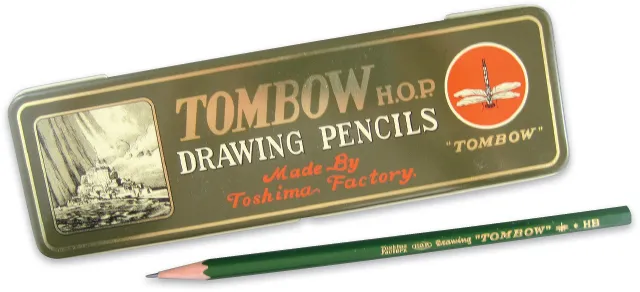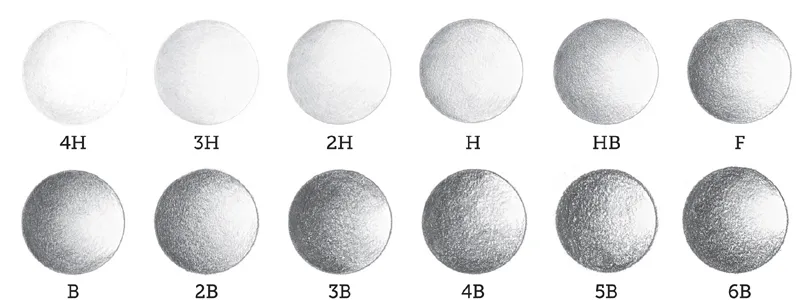
eBook - ePub
Pencil Magic
Surprisingly Simple Techniques for Color and Graphite Pencils
Marie Browning
This is a test
Partager le livre
- 250 pages
- English
- ePUB (adapté aux mobiles)
- Disponible sur iOS et Android
eBook - ePub
Pencil Magic
Surprisingly Simple Techniques for Color and Graphite Pencils
Marie Browning
Détails du livre
Aperçu du livre
Table des matières
Citations
À propos de ce livre
Discover simple but sophisticated fine arts techniques to use with both graphite and colored pencils to create beautiful papercrafts, art journals, mixed media, scrapbooks, and more.
Foire aux questions
Comment puis-je résilier mon abonnement ?
Il vous suffit de vous rendre dans la section compte dans paramètres et de cliquer sur « Résilier l’abonnement ». C’est aussi simple que cela ! Une fois que vous aurez résilié votre abonnement, il restera actif pour le reste de la période pour laquelle vous avez payé. Découvrez-en plus ici.
Puis-je / comment puis-je télécharger des livres ?
Pour le moment, tous nos livres en format ePub adaptés aux mobiles peuvent être téléchargés via l’application. La plupart de nos PDF sont également disponibles en téléchargement et les autres seront téléchargeables très prochainement. Découvrez-en plus ici.
Quelle est la différence entre les formules tarifaires ?
Les deux abonnements vous donnent un accès complet à la bibliothèque et à toutes les fonctionnalités de Perlego. Les seules différences sont les tarifs ainsi que la période d’abonnement : avec l’abonnement annuel, vous économiserez environ 30 % par rapport à 12 mois d’abonnement mensuel.
Qu’est-ce que Perlego ?
Nous sommes un service d’abonnement à des ouvrages universitaires en ligne, où vous pouvez accéder à toute une bibliothèque pour un prix inférieur à celui d’un seul livre par mois. Avec plus d’un million de livres sur plus de 1 000 sujets, nous avons ce qu’il vous faut ! Découvrez-en plus ici.
Prenez-vous en charge la synthèse vocale ?
Recherchez le symbole Écouter sur votre prochain livre pour voir si vous pouvez l’écouter. L’outil Écouter lit le texte à haute voix pour vous, en surlignant le passage qui est en cours de lecture. Vous pouvez le mettre sur pause, l’accélérer ou le ralentir. Découvrez-en plus ici.
Est-ce que Pencil Magic est un PDF/ePUB en ligne ?
Oui, vous pouvez accéder à Pencil Magic par Marie Browning en format PDF et/ou ePUB ainsi qu’à d’autres livres populaires dans Arte et Tecniche artistiche. Nous disposons de plus d’un million d’ouvrages à découvrir dans notre catalogue.
Informations
Sujet
ArteSous-sujet
Tecniche artisticheAll About Graphite Pencils
The simple pencil is what great people use to create great art. Sculptures, architecture, and symphonies start with a humble pencil sketch or note. You will get to start your masterpieces with quality drawing pencils of different point strengths, and mechanical pencils, too.
Pencils have two main components: a graphite core, known as the lead, and a plastic or wooden body that encases the lead. Some pencils have an eraser at one end. Modern pencils got their start in Roman times when lead was used to make marks on papyrus. Modern pencils do not actually contain any lead; they are made with nontoxic graphite. A large deposit of graphite was discovered in England in 1564 and quickly replaced lead, as it leaves a darker mark. However, graphite is very brittle and requires a holder to prevent it from breaking. Graphite pieces were first wrapped with string and then later inserted into hollowed-out wooden sticks: thus the wood-cased pencil was born.
In the early 1900s, pencil manufacturers needed new sources for wood. Incense cedar from California’s Sierra Nevada mountains was found to be a superior wood for pencil manufacturing and soon became the top choice for quality pencil makers around the world. The incense cedar woods are harvested on a sustained-yield basis. Sustained-yield means that the annual growth of the forest is greater than the amount of wood harvested from the forest.
Hardness
Depending on how hard the lead is, pencils make different marks. A hard pencil lead leaves light, fine marks that are great for drawing precise details. A soft pencil lead leaves dark, heavy marks that are typically used for filling in large areas, or for shadows. It mainly comes down to personal preference which leads you choose to use; you have to play around to figure out what works for you. Not all pencil leads are created equal, though: they vary in strength, smoothness, smudge resistance, and hardness.
My preferred pencils, and the pencils used in this book, are Tombow drawing pencils, which offer superior, extra-refined, high-density graphite. They are super smooth when drawing and shading, making it easy to create perfect graduated shades. They have a high point strength and are break resistant. Smear-proof lines help produce crisp, clean drawings with the added value of slow wear for smooth, dense writing. They are available in point strengths from very hard, 6H, to very soft, 6B. You can use your choice of pencil while practicing the skills in this book, but keep the pencil quality in mind as you shop.
According to the European scale system, pencils are graded “H” (hardness) and “B” (blackness), with an accompanying number to describe how hard or how black the pencil is. The more H’s you have, the harder the lead and the lighter the lines. The more B’s you have, the softer the lead and the darker the lines. The designation HB occupies the very middle of the scale; this is the lead in most mechanical pencils because of its suitability for writing. There’s also F (fine), which is between HB and B, and which makes dark, fine marks.

In 2013, Tombow celebrated its 100th birthday in making superior pencils and premium drawing and office supplies. Shown here is the Vintage Collectors Edition pencil set.

Shown are Tombow MONO drawing pencils of different hardnesses and a mechanical pencil.

Here you can see shaded circles going from very hard leads to very soft leads. In the middle is the most common mechanical pencil lead, HB, which is very suitable for writing.
Holding a Pencil
The first step to successful pencil drawing is controlling the pencil’s movement so every mark you make works toward creating the effect you want. The best grip is the one you already use. Trying to change your grip artificially is probably the worst thing you can do. However, many people ask me the proper way to hold a pencil, so here are a few recommended grips. Try to learn to use these as naturally as possible.
The basic tripod grip is most likely what you use for writing. You control your grip with your fingers, and it is an ideal way to hold your pencil for drawing. Your hand rests on the table for support and the upright position of the pencil allows for accurate shading with the tip, rather than the side.
The extended tripod grip uses the same hold as the basic tripod grip, but with the fingers further up the pencil. This is a comfortable way to hold a pencil for drawing and allows for more freedom and a light touch when shading.
The overhan...